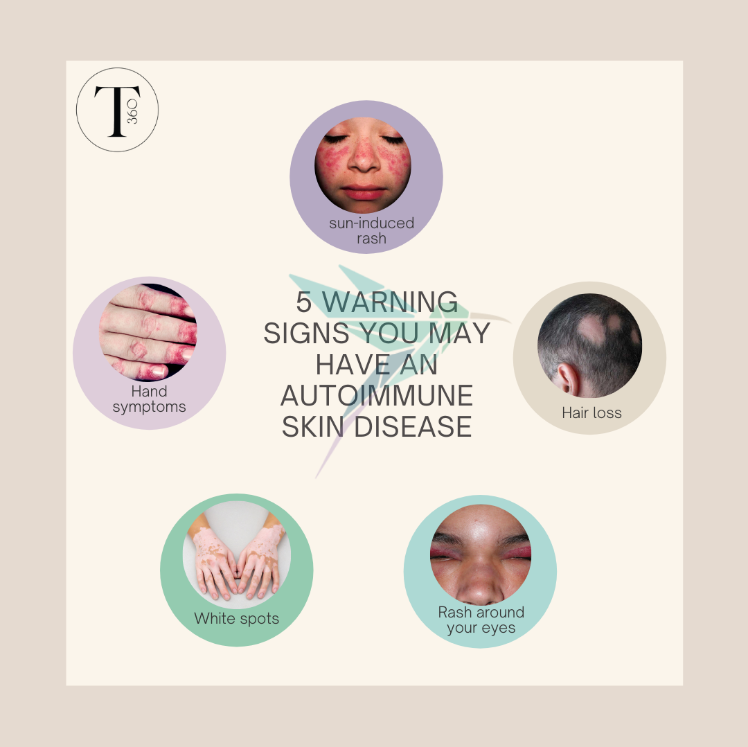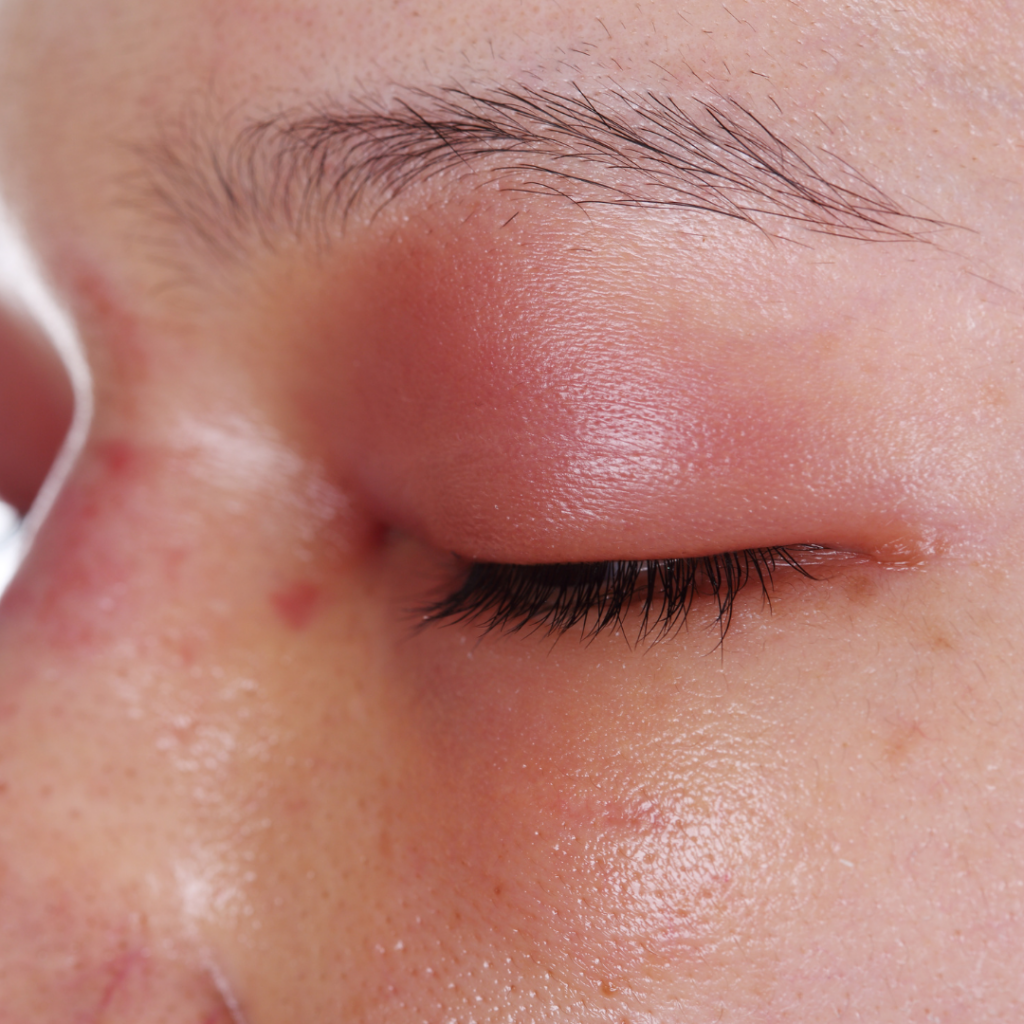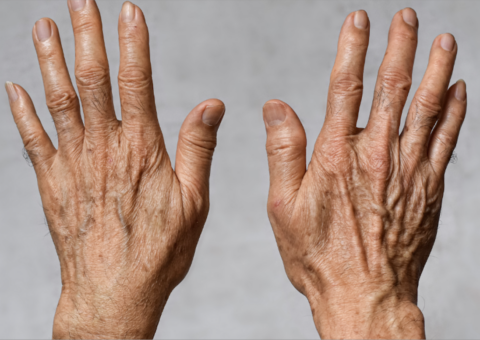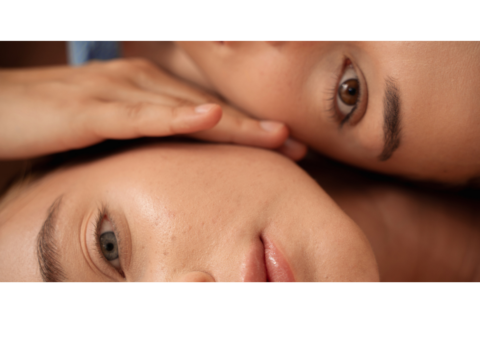![]() What is an autoimmune disease?
What is an autoimmune disease?
Autoimmune diseases are a group of diseases where your immune cells (that should be fighting infections) start to attack your normal cells. For example, in vitiligo, your immune cells are attacking the colour cells in your skin, leaving you with a light patch. Or in alopecia areata, your immune cells are attacking your hair follicles, and you lose that patch of hair. In some autoimmune diseases like lupus (also called SLE – systemic lupus erythematosus), your immune cells attack various organs leading to all kinds of symptoms.
The skin (what a wonderful organ) is a very visible organ. So it’s easier to spot early signs that your body might be ‘attacking’ itself and that you might have an autoimmune disease.
![]() Here are five early warning signs that you should look out for:
Here are five early warning signs that you should look out for:

![]() Sun-induced rashes
Sun-induced rashes

If you have a rash on your sun-exposed skin, it doesn’t necessarily mean you have an autoimmune disease. But be on the lookout for a sun-induced rash that stays for week to months.
![]() Your hands
Your hands
How do your fingers respond to cold weather? Raynaud’s phenomenon is when your fingers turn white when exposed to cold (they can even turn blue). When your hands warm up again, your fingers become red. Raynaud’s phenomenon is linked to autoimmune disease. Red cuticles or knuckles and swollen joints can also be features of autoimmune disease.
![]() Hair loss
Hair loss

Hair loss can be localized to one area or generalised. Round patches of hair loss without any scale or pimples often point to alopecia areata. In this condition, your immune cells attack your growing hair follicle. Diffuse hair loss has many causes, and lupus is one of them.
![]() White spots
White spots

Vitiligo is a disease where your immune cells target your colour cells or melanocytes. Leaving that area of skin with no colour. Vitiligo often occurs around the mouth, eyes, and hands but can occur anywhere on the body. Take precautions when the skin colour is not just diminished, but completely gone in affected areas.
![]() Rash around the eyes
Rash around the eyes

A persistent red to purple-ish rash around the eyes can also be a sign of autoimmune disease. This is often accompanied by swelling around the eyes.
![]() So what should you do if you suspect an autoimmune condition?
So what should you do if you suspect an autoimmune condition?
It’s advised to see your dermatologist if you are concerned about any of the above signs. Your doctor will do some blood tests and discuss treatment options. It’s always better to pick up the disease sooner and start treatment earlier.
Remember, naturally reducing inflammation caused by autoimmune disease is possible.
While it’s true that medications prescribed by a doctor for inflammation and pain may be necessary, the truth is that inflammation can also be treated effectively with diet and lifestyle changes. Avoid things that increase inflammation, such as sugar, trans-fat, alcohol, and smoking. Focus on things that decrease inflammation, like regular low-intensity exercise and foods such as coconut oil, avocados, olives, vegetables, herbs, salmon and sardines. An elimination diet — in which the most common food irritants are taken out of the diet and then slowly reintroduced to see if they trigger an inflammatory reaction — is a good method to identify foods that should be avoided.
Autoimmune diseases are complex, and unfortunately many people go years with symptoms and no diagnosis. Some common early symptoms are fatigue, achy muscles, hair loss, and skin rashes.
While some autoimmune diseases will require medicine, a great deal of symptoms can be managed and healed through diet and lifestyle changes with TASH 360’s integrative medical team.








